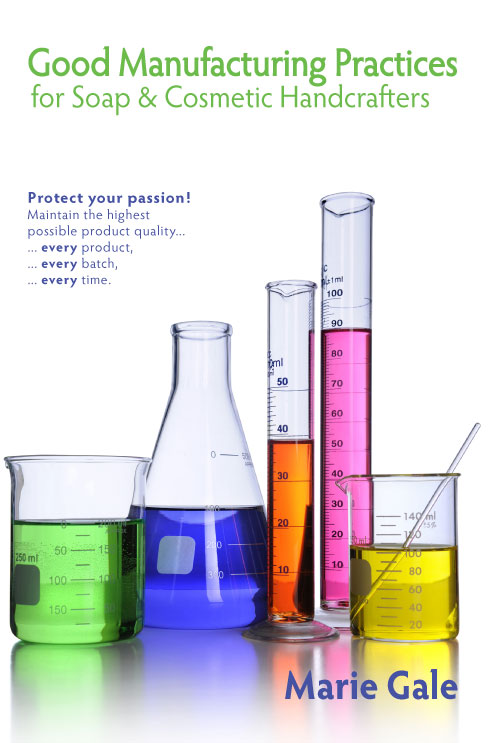The FDA recently announced that they have issued a new draft guidance on good manufacturing practices for cosmetic products. This new draft is an update to the existing “Cosmetic Good Manufacturing Guidelines/Inspection Checklist“.
According to the Introduction:
“This document provides guidance to industry and other stakeholders on the FDA’s current thinking concerning what constitutes Good Manufacturing Practices (GMPs) for cosmetics.”
So, What’s New?
The Draft Guidance is more in depth than the previous GMP Guidelines/Inspection Checklist, and is written in a way that is much easier to understand and follow. The FDA also incorporated portions of the International Standards Organization’s ISO 22716 Cosmetics – Good Manufacturing Practices (GMP) – Guidelines on Good Manufacturing Practices.
As with the earlier Inspection Checklist, the format of the Draft Guidance is in terms of “you should determine if…” so it’s also a checklist of sorts. That hasn’t changed, it’s just that the checklist has a little more explanation and more detail of what should be checked.

Record Keeping and Documentation
In the old Inspection Checklist, documentation and record-keeping was only briefly addressed. In this new Draft Guidance there are two new sections: Documentation, and Records.
The Records section outlines the various types of records that should be kept. Those records should: “…capture in detail the operations, procedures, deviations from procedures, justifications, instructions (including training), specifications, protocols, reports, methods, precautions, corrections and other measures and other appropriate information related to GMPs.”
Raw material records should document if a raw material is adequately controlled, which may include records of the origin, receipt, examination, testing, disposition, and use of the material.
Batch production control records should include documentation of:
- All ingredients (name, code, lot number, quantity, etc.) added to the batch;
- All production steps (i.e., processing, handling, transferring, holding, and filling)
- In-process sampling, controlling, and adjusting steps
- Batch and finished product lot or control numbers
- Finished products control status: accepted or rejected.
Standard Operating Procedures
Standard Operating Procedures (“SOP’s”) weren’t even mentioned in the old Inspection Checklist, but in this new draft, SOP’s are not only defined in the new Definition section, they are specifically mentioned in several sections.
In particular, under the Production section, you should have written manufacturing and control SOP’s that cover, for example, formulations, processing instructions, in-process control methods, packaging instructions, and instructions for operating equipment.
One new line in the Productions section is “theoretical yield for a production batch is compared with the actual yield.” That’s one thing that’s pretty easy to put into place! If your batch recipe says it should make 50 ounces of lotion, then check at the end to see if you actually got 50 oz and make a note of how much you actually got. If it’s off, then you can check and find out why, and fix it if you need to.
Raw Materials
The start of the section on Raw Materials says they should be “identified, stored, examined, tested, inventoried, handled and controlled to ensure they conform to appropriate standards and specifications.” The specific items to check for are about the same as they were in the earlier document, but are a little easier to understand and follow.
The Raw Materials section is expanded to include subsections on water, color additives, and prohibited and restricted cosmetic ingredients.
Other Sections
Most of the other sections have been updated and are easier to read and understand, but haven’t markedly changed.
The Labeling section in the old Checklist has been removed, probably because following the labeling regulations is a separate function than following good manufacturing practices.
What Does It Mean To You?
Since the new Draft Guidelines are clearer and easier to read, they will certainly be a better resource when you are looking at ways to improve your own good manufacturing practices.
Keep in mind that these are NOT regulations. This is a guidance document that you can use to see where your GMP is (or is not) up to snuff.
If you are handcrafting soap or cosmetics, chances are you have already thought out many of the items covered in the guidelines. You’re most likely already striving for a clean work space, good and suitable equipment, and proper storage and handling of your raw materials. After all, if you are making good products, all those things need to be in place.
The next step is one of formalizing what you are doing: writing down your procedures and keeping accurate records of what you should be doing and what you are doing.
If you need some help, check out my book Good Manufacturing Practices for Soap and Cosmetic Handcrafters. It’s based on ISO 22716 (which has been incorporated into the new Draft Guidelines) and provides hints and tips for handcrafters for applying GMP guidelines on a small production scale. It is available from Amazon using the button below:



Leave a Reply